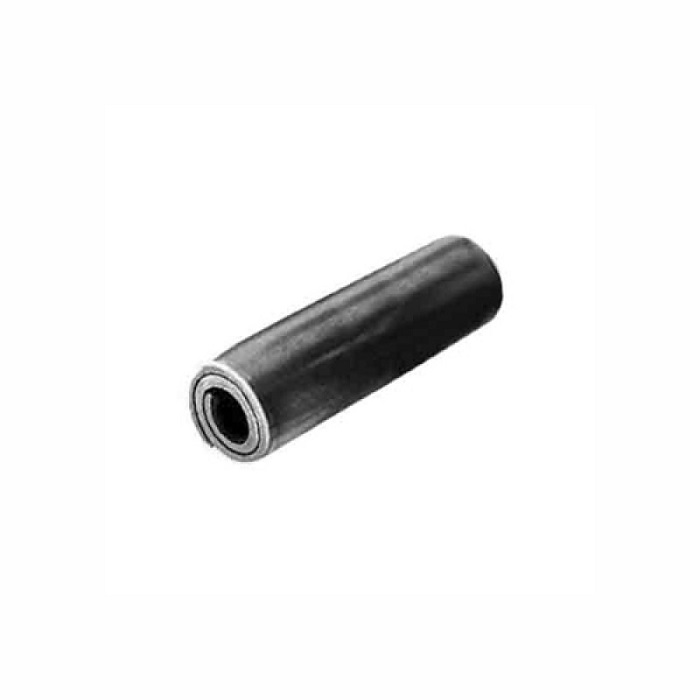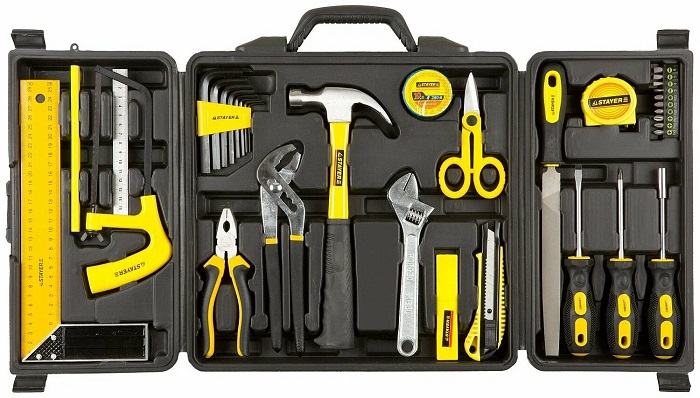Standards in industry and technology are an integral part of the quality and compatibility of component parts. One of the key elements defined by the standards is the pin DIN 7344 – cylindrical spiral. This standard defines the parameters and characteristics of this important element, which is used in various industries.
Content:
1. Introduction
1.1. General information about Pin DIN 7344
2. History and development of the standard
2.1. Beginning of the use of cylindrical spiral pins
2.2. Formation and development of the DIN 7344 standard
3. Technical characteristics
3.1. Geometric parameters of the pin
3.2. Manufacturing materials
3.3. Heat treatment and surface treatment
4. Application of the industry
4.1. Mechanical engineering
4.2. Automotive industry
4.3. Aerospace industry
4.4. Other areas of use
5. Advantages and disadvantages
5.1. Advantages of using a DIN 7344 pin
5.2. Potential problems and ways to solve them
6. Conclusion
6.1. The role of DIN 7344 pin in modern technology and industry
6.2. Prospects for the development of the standard
1. Introduction
1.1. General information about the DIN 7344 pin
The DIN 7344 pin is one of the key components of the system of standards regulating elements and parts used in industry. According to the German standard DIN (Deutsches Institut für Normung), this cylindrical spiral pin is defined by specific technical parameters aimed at ensuring high quality and reliability in various applications.
The DIN7344 pin is made of high-quality materials and has a specific geometry, which makes it an ideal element for various engineering solutions. Its application includes various sectors of production, where standardized and effective fixation of parts is required.
This standardization allows enterprises and developers to ensure a high level of interchangeability and compliance with safety and reliability requirements in their products. This contributes to the optimization of production processes and the facilitation of maintenance of the equipment.
In the following sections, the history and technical characteristics of the DIN 7344 pin will be studied in more detail, its application in various industries will be considered, and the advantages and disadvantages of this regulatory element of the industry will be analyzed.
2. History and development of the standard
2.1. Beginning of the use of cylindrical spiral pins
The history of the use of cylindrical spiral pins goes back decades and reflects the need to develop standards to ensure their effective use. The first cases of the use of these pins can be traced in the mechanical engineering and metalworking industry in the middle of the 19th century.
The origin of the use of spiral cylindrical pins is connected with the need to connect parts without the use of glue or other complex assembly systems. Their great strength and possibility of use in various conditions made them quite popular in industrial applications.
2.2. Formation and development of the DIN 7344 standard
The formation of the DIN 7344 standard was an integral part of the standardization process in German industry. DIN or Deutsches Institut für Normung (German Institute for Standardization) played a key role in determining the parameters and characteristics of cylindrical spiral pins.
With the emergence of the mass production industry and the growth of international trade, it became important to unify technical requirements for component parts. DIN 7344 was developed taking into account the various requirements of different industries, which ensured its wide acceptance in the world.
The development of the standard does not stop, and DIN continues to actively work on its modernization, taking into account modern technological challenges and market requirements. This standard remains an important link for ensuring the quality, reliability and interchangeability of cylindrical spiral pins in various industrial sectors.
3. Technical characteristics
3.1. Geometric parameters of the pin
The DIN 7344 pin has geometric parameters that play a critical role in its functionality and interaction with other system elements. The diameter and length of the pin are the main parameters carefully determined in accordance with the standard. At the same time, the accuracy of the geometric dimensions guarantees a reliable connection and high stability in various operating conditions.
In addition, the geometric parameters include the angle of inclination of the spiral, which is also important in determining the optimal adhesion and stability of the elements.
3.2. Manufacturing materials
The manufacture of the DIN 7344 pin includes the use of high-quality materials taking into account its functional purpose and operating conditions. Usually, for these pins, steel is used in accordance with the chemical and mechanical properties determined by the standard. Such an approach provides the necessary strength, resistance to corrosion and wear, which makes the pins effective in various working conditions.
3.3. Heat treatment and surface treatment
Special attention is paid to the heat-treated and treated surface during the production of the DIN 7344 pin. Heat treatment is used to achieve optimal properties of the material, in particular, strength and stiffness. Surface treatment, in turn, may include coating with anti-corrosion materials or the production of special coatings to facilitate installation and additional resistance to the effects of the external environment.
These technical characteristics play a decisive role in ensuring the high quality and durability of the DIN 7344 pin in various industrial applications.
4. Application of the industry
4.1. Mechanical engineering
The DIN 7344 pin finds wide application in the machine-building industry, where precision and stability are key requirements. This pin is used to connect moving parts, which ensures reliable and stable fixation of parts in various designs of machines and equipment.
4.2. Automotive industry
In the automotive industry, the DIN 7344 pin plays a key role in connecting various components from engines to suspension. Its high strength and resistance to the effects of vibrations and shock loads allow it to be used in conditions of constant operation, which is important for automotive systems.
4.3. Aerospace industry
In modern aerospace technologies, where every structural element has a decisive importance, the DIN 7344 pin is used to stabilize and connect elements of spacecraft and rockets. Its lightness and high strength make it an ideal choice for use in space engineering.
4.4. Other areas of use
The DIN 7344 pin is also used in other industries, such as electrical engineering, shipbuilding, construction and many others. Uninterrupted operation of complex systems and mechanisms in various industries depends on its accuracy and reliability.
In general, the DIN 7344 pin has become a mandatory part in industrial processes, providing standardized and effective fixation of components in a wide range of industrial sectors.
5. Advantages and disadvantages
5.1. Advantages of using a DIN 7344 pin
Standardization and interchangeability: One of the key advantages of the DIN 7344 pin is compliance with international standards, which ensures interchangeability of other components and ease of maintenance.
High strength: The pin is made of high-quality materials, which guarantees its high strength and resistance to mechanical loads.
Universality of application: Thanks to its technical characteristics, the DIN 7344 pin can be used in various industries, from mechanical engineering to the aerospace industry.
Ease of installation: Cylindrical spiral design facilitates installation, which facilitates production processes and increases productivity.
5.2. Potential problems and ways to solve them
Wear and corrosion One of the main problems can be wear and corrosion under the influence of working conditions. Regular maintenance and the use of high-quality materials with a special coating can reduce these risks.
Non-standard operating conditions In some industries, non-standard operating conditions may arise. This can be solved by adaptation of materials or technical modifications of production.
Cost: Compared to other types of connections, the cost of manufacturing and installing a DIN 7344 pin can be higher. However, in the context of long service life and high quality, this cost can be justified by the efficiency and reliability of the connection.
Considering these advantages and solving potential problems, the DIN 7344 pin remains an important element in the industry, providing a high level of functionality and compliance with standards.
6. Conclusion
6.1. The role of DIN 7344 pin in modern technology and industry
The DIN 7344 pin is a key element of modern technology and industry, and its role is largely determined by its technical characteristics and universality of application. In the machine-building industry, it provides a reliable and stable connection of components, in the automotive industry – the effective functioning of the suspension and other systems, and in the aerospace industry – stability and reliability in the conditions of outer space.
Standardized dimensions and parameters guarantee the interchangeability of other structural elements, which contributes to the optimization and facilitation of production processes. The DIN 7344 pin has proven its effectiveness in various industries, and its influence on increasing the reliability and productivity of production cannot be overestimated.
6.2. Prospects for the development of the standard
The development of the DIN 7344 pin standard continues in accordance with changes in the technological landscape and market requirements. It is expected that with the appearance of new materials and manufacturing technologies, the standard will be adapted to meet the changed requirements for strength, lightness and resistance to environmental influences.
Further improvements may include innovations in coatings to prevent corrosion, development of lighter materials to reduce weight and improve functionality in various conditions. Also, the development may include additional parameters and characteristics to meet the various requirements of markets and industries.
In general, the DIN 7344 pin remains an important component in the world of industry, and its development is characterized by rapidity and adaptation to modern technological challenges.














Leave a Reply